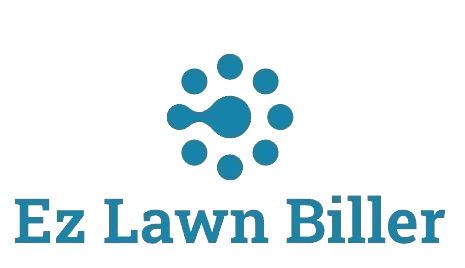Set Pricing Tips for Lawn Professionals
Pricing your lawn care services can be one of the most challenging aspects of running a successful lawn care business. It’s not just about covering costs; it’s about maintaining profitability while offering competitive rates. This blog post will explore essential pricing tips specifically tailored for lawn professionals, helping you navigate the complexities of setting rates that attract clients and ensure your business thrives.
As a lawn care professional, understanding how to price your services effectively is crucial for long-term success. With various factors to consider, such as competition, overhead costs, and client budgets, it can be overwhelming to determine the right pricing strategy. This article will cover key points, including how to analyze costs, the importance of market research, and various pricing strategies that can set your lawn business apart.
Moreover, we will delve into practical tips for implementing these strategies, including how to use lawn billing software to streamline your processes and ensure accuracy in invoicing. Let’s explore these pricing tips in detail to help you establish a profitable and sustainable lawn care business.
Understanding Your Costs
Before you can set competitive prices, it’s essential to understand your costs thoroughly. Costs can be divided into fixed and variable categories. Fixed costs include expenses like equipment purchase, insurance, and office space. Variable costs encompass labor, fuel, and supplies, which can fluctuate based on the volume of work you take on.
To start, create a detailed list of all your expenses. For instance, if you use a lawn service software, it might help you track these costs effectively. Knowing how much it costs to provide your services will give you a solid foundation for pricing your offerings. For example, if you find that your total monthly costs are $2,000 and you aim for a profit margin of 20%, you will need to generate at least $2,400 in revenue each month.
It’s also worthwhile to consider seasonal fluctuations in costs. In peak seasons, you may incur higher costs for labor and supplies. Being aware of these trends will allow you to adjust your pricing throughout the year and maximize profitability during busy periods.
Conducting Market Research
Once you have a clear understanding of your costs, it’s time to analyze your market. Research your competitors: what are they charging for similar services? Understanding the pricing landscape in your area is critical for setting your rates competitively.
To gather this information, start by checking local listings, visiting competitors’ websites, or even calling to inquire about their services. This will give you a sense of what clients are willing to pay and help you position your offerings accordingly. For instance, if most companies in your area charge $50 for a lawn mowing service and your costs allow you to charge $60, you may need to justify the price difference through superior quality or additional services.
Additionally, consider looking at local demographic trends that might affect pricing. In wealthier neighborhoods, clients might be willing to pay more for premium services. In contrast, budget-conscious areas may require more competitive pricing. Tailoring your pricing strategy to your target demographic can lead to better client acquisition and retention.
Choosing the Right Pricing Strategy
There are several pricing strategies that lawn professionals can adopt, depending on their business model and target market. One common approach is the hourly rate, where you charge clients based on the time spent on their property. This method allows for flexibility and can be beneficial for one-off jobs but may not always maximize your profits for regular clients.
Another approach is a flat rate for specific services, such as mowing or fertilization. This not only simplifies the billing process but makes it easier for clients to understand what they are paying for. Offering bundled services at a discounted rate can also attract clients looking for comprehensive lawn care packages. For example, you might offer a package that includes mowing, fertilization, and aeration at a competitive rate compared to purchasing each service individually.
Additionally, consider implementing a tiered pricing strategy. This allows clients to choose from different service levels, offering budget-friendly options without sacrificing quality. It can also encourage clients to upgrade to more premium services for additional benefits.
Leveraging Lawn Service Software
Using lawn service software can greatly enhance your pricing strategy. Software like EZ Lawn Biller enables you to automate billing, track services performed, and manage client information all in one place. This streamlined approach saves time, reduces errors, and ensures that you can focus more on delivering high-quality lawn services rather than getting bogged down in administrative tasks.
With features like customizable invoices, you can ensure that your pricing is communicated clearly to clients. Using such software allows you to present professional invoices that reflect your brand, enhancing your business’s credibility. A well-organized invoicing process can also improve client communication, ensuring that bills are sent out on time and clients are always informed about their expenses.
Moreover, the report generation capabilities of lawn service software can help you analyze your pricing strategy’s effectiveness. By tracking income and monitoring overdue invoices, you can identify trends and adjust your pricing as necessary to maintain profitability.
Best Practices for Pricing Services
When setting prices, there are several best practices to keep in mind. First, ensure that your pricing reflects the quality of your services. Underpricing can lead to decreased perceived value, while overpricing without justification can deter potential clients. Balance is key; your prices should be competitive yet profitable.
Second, be transparent with your clients about what they are paying for. Providing detailed descriptions of services included in the pricing helps build trust and ensures that clients understand the value they are receiving. Consider offering free consultations or estimates to establish rapport and explain your pricing structure better.
Lastly, don’t be afraid to revisit and adjust your prices over time. As your business grows, and costs change, your pricing strategy should evolve accordingly. Regularly evaluate your business expenses and market trends to ensure your pricing remains competitive and profitable.
Communicating Value to Clients
In addition to competitive pricing, communicating the value of your services is essential. Clients need to understand why they should choose your lawn care company over others. Highlight your unique selling propositions (USPs), such as specialized services, high-quality customer service, or eco-friendly practices.
Utilize your website and marketing materials to showcase your expertise. Client testimonials, before-and-after photos, and case studies of completed projects can bolster your reputation and justify your pricing. Make it clear how your services contribute to their lawn’s health and aesthetics, ensuring clients recognize the long-term benefits of investing in your lawn care services.
Moreover, effective communication goes beyond marketing. Always maintain open lines of communication with your clients throughout the service duration. A simple follow-up after a job can reinforce client satisfaction and encourage repeat business.
Implementing Seasonal Pricing Strategies
Seasonal fluctuations in demand can provide an opportunity to adjust your pricing. During peak seasons, when lawn care needs are at their highest, consider implementing surge pricing for high-demand services. Conversely, during off-peak times, you might offer promotional rates or discounts to attract clients and maintain steady business.
For example, offering early-bird discounts for clients who sign up for spring services can incentivize bookings and ensure a busy season. Additionally, consider loyalty programs for regular clients who book services throughout the year, rewarding their continued business with special rates or complimentary services.
In some regions, offering winter services, such as snow removal or preparing lawns for the following season, can also help maintain cash flow during the slower months. Adapting your pricing strategy based on seasonal needs can significantly impact your overall profitability.
Final Thoughts on Pricing for Lawn Professionals
Setting the right prices for your lawn care services is integral to your business’s success. By understanding your costs, conducting thorough market research, and implementing effective pricing strategies, you can position your business for growth and profitability. Don’t forget the importance of leveraging tools like lawn billing software to streamline your processes, enhance client communication, and provide professional invoicing.
Ultimately, pricing should reflect the quality and value you provide while remaining competitive within your market. Regularly revisiting and adjusting your pricing strategy will ensure your lawn care business thrives in any economic landscape.
As you embark on this journey, remember that your pricing strategy is not static; it evolves with your business. Start implementing these tips today to set your lawn care business on the path to success!




